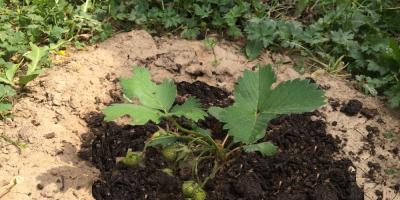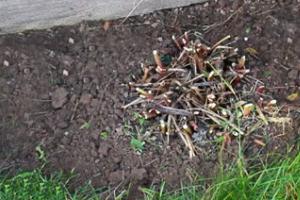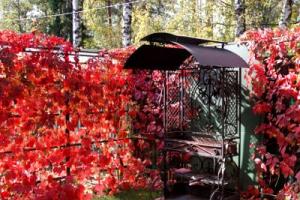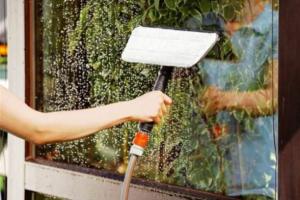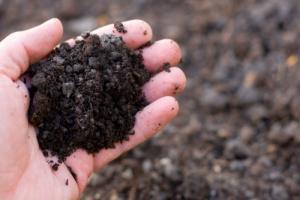Modern and light tiles"under a stone" for interior decoration Usually used when repairing walls. Of course, if you wish, you can line the ceiling and even the floor with it, but the convex and rough nature of such a surface will be excessively original even with the most futuristic design. The walls of the kitchen, corridor, hall and balcony are the most natural and promising place for “dislocation” for artificial stone.
Stone imitation wall tiles - advantages and disadvantages of stone imitation
The advantages of tiles imitating natural granite, basalt and further down the stone list are quite extensive:
- Economical. Compared to natural stone, its factory imitation is 3-5 times cheaper;
- Resistance to moisture, sunlight and artificial light, chemical reagents and strong mechanical stress at a quite decent, truly “stone” level;
- Light weight - with wall mounting the mass of a square meter of cladding is approximately 25-30 kg. Natural stone of such an area will be several times heavier, which will significantly complicate its installation.;
- Durability, comparable to the service life of the entire house or apartment (only subject to high-quality installation!);
- Significant variety of color, depth and texture textures. Imitation of not only stone, but also marble, ordinary and petrified wood, the interiors of ancient caves, pirate catacombs, etc.
A unique advantage of artificial stone tiles is the ability to partially finish walls. This material looks great in the form of individual “islands”, “chains” and patterns on a smoothly plastered base - other finishing materials must be built as a continuous sheet. “Stone” tiles can be used to cover one or more walls, decorate a decorative counter, or be used at the final stage DIY fireplace masonry. Design options The use of artificial stone cannot be described in the largest article; it is better to familiarize yourself with them in professional repair catalogs or on specialized websites.
However, there are also disadvantages of this material available (how could we do without them):
- Due to the textured outer surface, cutting such tiles is much more difficult than real ones. To adjust the elements to size, you will have to use special and rather bulky machines or a grinder - a diamond glass cutter will be powerless here. The cut will have to be carefully sanded;
- A bizarrely lumpy wall looks unusual and stylish, but you can’t hang furniture or other bulky household items on it. Firstly, wide and unsightly gaps will remain. Secondly, why cover up the unique decorative beauty with a standard kitchen set?
- Any stone - both natural and artificial - belongs to the so-called. "cold" coatings. Constantly or often leaning your head or leaning your back against it is unwise. “Warm” materials are better suited for contact with the human body - wood, natural wallpaper, cork, etc.
Homemade tiles
Indeed, purchase in a store or construction market fake diamond not necessary; if desired, you can “sculpt” it yourself. However homemade tiles“under the stone” will be much less strong and durable than a factory one, even if the manufacturing factory is located in a makeshift corner of a Chinese province. In addition, choosing high-quality pigments for painting pseudo-stone blocks will not be easy, as will special hardeners-thickeners. Additionally, you will need to purchase durable polyurethane molds for casting work.
That's why self-production artificial tiles are relevant if there is excess cement in the household. For example, when large-scale construction work strip foundation for the fence ran out, but solid reserves of cement (grades not lower than 300!) remained. Most good cement in a year or two it will turn into a ossified mass on the shelves of the garage, cellar or barn. It is better to experiment with its unconventional uses than to throw away cement fossils for nothing.
Other ingredients for the "stone batch" are simple and cheap. For 1 kg of cement you need to add 1.5 kg of clean sifted sand and 1.5 kg of marble or granite chips (pebbles of similar size if possible). Mixing the dry mixture is carried out in a large container, very convenient for this operation manual concrete mixer. In another bucket (trough, tub) an aqueous solution with coloring pigments and thickening reagents is diluted. Mix the dry and water components of the artificial stone as thoroughly as possible, using vibrators or drills with special attachments. The mixture will be thick and will have to be stirred long and thoroughly.
The finished mass is poured into several molds, inner surface pre-treated with silicone or soap solution for ease of subsequent removal of finished blocks. The still liquid stone is leveled with a notched spatula, with simultaneous vibration of the form. This way, air is removed from the internal space of our bricks, and their back surface is roughened for good contact with the mounting mortar or glue.
Stone-like finishing tiles for interior decoration are removed from the casting molds after 24-36 hours. At least another day should pass until the blocks dry without contact with polyurethane, freely placed on a clean floor. Only after this can you begin wall installation our casting works. It is carried out according to the same procedure by which purchased artificial stone is installed.
Stone-effect tiles - every step is important for interior decoration
Relief tiles for stone-look walls go through the following stages of installation:
How to tile with relief tiles to look like stone - step-by-step diagram
Step 1: Preparation
All stone blocks must be inspected before mixing the first batch of adhesive mortar. It is best to lay them on the floor and carefully examine them for chipped corners, damage to the façade surface, disruption of color uniformity, etc. It is very disappointing to first cut or place a stone on the installation site, and then find out its poor quality. Such repair collisions are prevented by a thorough preliminary inspection.
Step 2: Preparation again
The base of the walls must be strong. No peeling plaster, no cracks, rust stains or dampness. When laying a solid canvas on the wall, you can apply grooves crosswise for deep penetration of the glue. For partial (designer) installation, the viscosity of the adhesive composition should be higher, because it is applied to a smooth base.
The tiles are always laid from top to bottom and from the corner - this is an unshakable rule for stone repairs. For the first row, auxiliary lines are drawn on the wall surface, according to the position of the plumb line and level. The success of the entire installation procedure depends on the accuracy of the first row.
Step 3: Now the facing
It is better to buy special glue for artificial stone; preferably the composition recommended by the manufacturer. Adhesive composition the underside of the block and a section of the wall are lubricated, after which the tile is pressed exactly in place. High-quality glue will “grab” a heavy element in 10-20 seconds, this time is enough to level it. Excess glue is removed with a spatula back into a bucket or other container.
The entire wall (selected surface) is completely tiled with solid tiles. As with ceramics, the labor-intensive incisions are left for the next day. However, if the amount of work is small (a few square meters), they can be glued in one day.
Step 4: Mortises and Seams
The tiles, precisely cut and sanded from the visible ends, are glued to the remaining spaces. When this rather tedious procedure is completed, all that remains is to rub the gaps between the stones with a special fugue. Dyes are added to it to match the color of the relief stone - only now the work is finished, you can begin to admire it.
Interior decoration of a room with stone-like tiles is popular, because with the help of this facing material the room is given a unique appearance. Currently on the market finishing materials There is a selection of a huge number of tiles of various textures, sizes, shapes, colors and imitations of natural stone.
Advantages and disadvantages of stone tiles
Such facing material like a tile underneath a natural stone has both strong and weaknesses. The main advantages of this tile include:
- Tile price. Imitation stone costs much cheaper than similar products made of natural stone.
- High strength of the product, resistance to moisture, ultraviolet rays, mechanical and chemical damage. The strength of artificial stone is as close as possible to natural stone.
- Lightweight material. When using stone-like gypsum and ceramic tiles for interior decoration, its weight will be about 30 kilograms per 1 square meter. m. surface area, which is 3 times lighter than natural stone.
- An impressive selection of cladding products. When using this type of finishing material, various design ideas , thanks to the variety of colors and shapes.
- Possibility of partially finishing the room with tiles. Stone, even artificial, will look appropriate and harmonious when highlighting part of the room. Thanks to the combination of colors and textures, a unique composition is created that decorates a specific area of the wall.
Despite its merits decorative tiles also has a number of disadvantages. These include:
- Difficult to process material. Cutting plaster is more difficult than cutting smooth products. A special tool is required, for example, a grinder.
- It will not be possible to mount hanging furniture (shelves, mezzanines, etc.) on a wall with decorative tiles.
 While creating room cladding ceramic or gypsum tiles are used. Each of these materials has its own characteristics and properties. In order to decide which stone-look wall tiles to use in renovating a room, it is recommended that you familiarize yourself with the characteristics of the products.
While creating room cladding ceramic or gypsum tiles are used. Each of these materials has its own characteristics and properties. In order to decide which stone-look wall tiles to use in renovating a room, it is recommended that you familiarize yourself with the characteristics of the products.
Gypsum wall cladding
When producing gypsum cladding, it is given the appearance of brickwork or the natural texture of stone. Most often this coating is used for interior decoration of the following premises:
- Dining room.
- Cabinet.
- Kitchen.
- Hallway.
 Through the use of decorative gypsum coating, a specific relief is created on the wall from stone blocks, which, when positioned correctly, decorate the appearance of the room. Gypsum is a difficult material to use, as it absorbs moisture and, as a result, cannot be used in rooms with high humidity and on building facades. When using gypsum products, you should pay attention to their properties:
Through the use of decorative gypsum coating, a specific relief is created on the wall from stone blocks, which, when positioned correctly, decorate the appearance of the room. Gypsum is a difficult material to use, as it absorbs moisture and, as a result, cannot be used in rooms with high humidity and on building facades. When using gypsum products, you should pay attention to their properties:
- Fire resistance. Products made from gypsum are non-flammable.
- Heat and sound insulation.
- Gypsum is an environmentally friendly material.
- Maintenance favorable climate in room.
Ceramic wall cladding
 Peculiarity ceramic products in their durability, proximity to natural beauty and calm color scheme. Ceramic cladding is used to display the surface of a rock with tiny cracks and fractures. This type of material can be used for both external cladding at home due to its moisture-resistant properties, and indoors when finishing bathrooms, kitchens, and hallways. Ceramic finish
has proven itself as a coating that ensures hygienic cleanliness, since it remains sterile after cleaning and does not absorb aggressive chemicals. The following technologies for the production of decorative ceramics are currently used:
Peculiarity ceramic products in their durability, proximity to natural beauty and calm color scheme. Ceramic cladding is used to display the surface of a rock with tiny cracks and fractures. This type of material can be used for both external cladding at home due to its moisture-resistant properties, and indoors when finishing bathrooms, kitchens, and hallways. Ceramic finish
has proven itself as a coating that ensures hygienic cleanliness, since it remains sterile after cleaning and does not absorb aggressive chemicals. The following technologies for the production of decorative ceramics are currently used:
- Porcelain tiles. Porcelain stoneware is not inferior in its characteristics to natural material. Appearance porcelain stoneware and its colors allow you to realize different design solutions. The products are produced in the form of rectangles or squares with a side length of 30 cm, 60 cm, 90 cm. Due to the strength of the product and its resistance to moisture, it can be used both outside and indoors.
- Catto. To create catto, clay is used, which is exposed to high temperatures. Products are produced in the shape of a rhombus, square, hexagon. Catto is used to decorate hallway walls. The range of colors of the material is limited to shades of red and brown.
- Clinker tiles. It is created from certain types of clay using the extrusion method, as a result of which it has good strength. When laying clinker tiles, they imitate the surface of brickwork. The material is suitable for use both indoors and outdoors.
Laying decorative coverings on walls
 Choosing the best one for use in a specific case decorative coating, proceed to its installation. When carrying out work, it is recommended to adhere to the following algorithm:
Choosing the best one for use in a specific case decorative coating, proceed to its installation. When carrying out work, it is recommended to adhere to the following algorithm:
- Preparation work surface for laying tiles. To obtain a high-quality result of the work, the walls will need to be pre-leveled and completely cleaned of any contaminants. available ways. To do this, you will need a special tool (spatulas, brushes, etc.).
- An impregnating primer is applied to the surface of the finished wall using a brush or roller. In the future, this will ensure a strong connection between the adhesive and the wall.
- After the primer has dried, they proceed to covering the surface. To do this, use a special glue for artificial stone. The adhesive is applied to the tile and pressed to the desired location on the wall. To correct the position of the tile, you have 20 seconds; after this time, the glue will harden and the work will have to be redone. It is recommended to lay the tiles starting from the lower left corner of the work surface, and then row by row, moving upward. It is recommended to remove excess glue immediately to facilitate further installation.
- Grouting joints. For grouting, a special material is used - fugue, to which dyes are added to ensure the closest possible appearance of natural stone.
- After laying the tiles, finishing coverings. Remains of glue and grout are removed from the surface of the coating.
If you adhere to this algorithm, you will get a high-quality result, regardless of the type of tile used. This is the installation process considered completed.
Stone-look gypsum tiles for interior decoration are used to decorate apartments, private houses, as well as restaurants, shops, offices, hotels and other premises. What is this material, what types does it come in and how to use it?
Compound
Decorative gypsum tiles for interior decoration contain gypsum, water, sand, modifier and surfactants. Modifiers improve the quality of the finishing material, making it stronger and more durable.
The tiles are available in the form of imitation brick, wild stone or cobblestone, as well as smooth.

Advantages and disadvantages
Gypsum tiles, especially those imitating brick or stone, are widely used. Its advantages are:
- ease of installation,
- low weight, which allows you to glue it even to drywall,
- relatively low price,
- environmental cleanliness,
- small thickness,
- the material is warm to the touch, has heat and sound insulating properties,
- safety - lightweight, non-conductive,
- fire safety,
- the ability to apply decorative coatings on top.
It is also important that such artificial stone can be restored and made independently.

Of course, it also has disadvantages:
- strongly absorbs water, so it is used only in dry rooms,
- does not have great frost resistance,
- low strength, resistance to impacts and abrasions,
- there is a risk of buying low-quality material that will quickly collapse,
- It is difficult to keep clean due to the complex terrain, so it is recommended to cover the surface with a special varnish after installation.
The hygroscopicity of the tiles can be positive quality- it allows you to regulate the humidity in the room.

Application
Artificial stone or gypsum brick can be used to decorate the entire room, as well as one wall or a small section of it. This material is often used to create accents in the interior: it is used to decorate niches, fireplaces, and columns.

Brick-like tiles are popular for decorating loft-style interiors, as in the photo, because it is not always possible to build a real one in an apartment. brick wall. Its rough texture is well suited for this direction. Stone-effect tiles are used in various architectural styles.
Advice! Before laying the tiles, lay a sample of them and see how they look.
For stone-look tiles, the direction from which the light falls is very important. Side lighting will advantageously emphasize the relief, while frontal lighting is best avoided.

As with other finishing materials, light cladding visually expands the room, while dark cladding makes it smaller. In small spaces such as small rooms, balconies, loggias, it is better to tile not the entire wall, but individual fragments. It is better to cover large areas in large rooms: living rooms, halls. Most often, stone-like tiles are used to decorate individual elements: niches, fireplaces, stoves (in this case its fire-resistant properties are very useful), ventilation ducts, stairs. You can see an example of finishing in the photo.

Installation technology
Gypsum tiles are best glued to bases made of concrete, gypsum, brick, plasterboard, and also covered with plaster. The lining is carried out at temperatures above +10 degrees.

If gypsum tiles are glued to some non-standard surface, for example, old tiles, it makes sense to make a layer of material that connects well with both the cladding and the base. For a tile base, this can be high-quality strong tile adhesive.
To decorate a wall with gypsum stone, the tools you will need are:
- level - water or laser;
- drill with mixer attachment,
- hacksaw or grinder for sawing,
- miter box,
- foam sponges,
- grout spatula,
- straight and notched spatula,
- tassels,
- sandpaper or whetstone,
- construction gun or a regular plastic bag.
The following materials will also be useful:
- glue - if it came with the stone, you need to use it; Tile adhesive or gypsum compounds (Knauf Perflix, Volma Montazh) are also suitable.
- wall primer,
- grout for seams,
- if necessary - paints for the seams and the tiles themselves,
- varnish (water-based).
Can be used as glue silicone sealant, cement glue, gypsum plaster, PVA glue, mastic.
To stick tiles, you first need to mark the wall. This way the lining will be smooth. To do this, you need to mark a horizontal and vertical line, relative to which the stone will be laid. Usually they start installing it from the corner, so the markings are tied to it.

Gypsum stone tiles can be of different shapes, so when marking, select elements so that they do not repeat. Gypsum brick tiles are simpler in this regard, they are the same in shape. To accurately apply markings, you need a water or laser level. The latter is easier to use, including alone, but it is more expensive.

Next we start gluing. Before this, the base is primed. The glue is mixed with a drill with a mixer attachment according to the instructions; the consistency should be close to thick sour cream. Apply glue to the base with a smooth trowel in a layer of about 5 mm, remove excess with a notched trowel. Apply an area for 3-5 elements at a time. The stone is pressed tightly to the base, adjusting its position.

If the gypsum tiles are made to resemble bricks, then the joints must be grouted. To do this, use special “crosses” or any suitable material at hand. For multi-format artificial stone, seams are not required.

Advice! Gypsum tiles under the brick are laid offset so that the vertical seams are not located on top of each other.
Plaster is quite easy to saw with both a regular hacksaw and a grinder. The latter is easier to give elements the required shape, but this tool produces a lot of noise and dust. It is best to cut along the relief line, but if you use a grinder, you can cut the tiles along any desired contour.

It is important to carefully design the junctions of switches, sockets, floors, and adjacent walls. To make external corners, gypsum tiles are cut with a grinder at an angle of 45 degrees.
The seams are rubbed gypsum glue or a special mixture. To do this, use a spatula or a construction gun; you can also make it from plastic bag(thick, like milk) like a pastry syringe, and squeeze out the glue with a strip 4-5 mm thick. Fill the grout halfway into the gun or bag.

Advice! Don't squeeze it out right away a large number of grout, otherwise it will set before you have time to spread it. Make sure that the composition does not get on the tiles - porous gypsum is difficult to wash off traces of putty.
Some design solutions involve contrast between the gypsum tiles and the seams. If the color of the tiles differs from the color of the grout, and this is not included in your project, then the seams are painted over with dyes after the fugue has set. You can also use dyes to disguise chipped tiles. After the glue has dried, the stone-look tiles are coated with water-based varnish.

Making your own gypsum tiles
You can make gypsum stone tiles yourself. For this you will need:
- building gypsum, better grade GF10 - 6 parts;
- slaked lime - 1 part;
- water - 10:7 in relation to gypsum.
Watch the video on how to make your own gypsum stone for interior decoration.
You can cast it as ready-made Silicone forms, and self-made ones. For example, you can make shapes in the form of a stone, as in the photo. Molds can be cast from liquid polyurethane. To do this, first a matrix is made, and then a layer of liquid polyurethane is poured into it.

The gypsum solution is prepared at one time and immediately poured into the mold. Gypsum is poured into the water and mixed construction mixer, then add lime. Stir the solution briefly so that the plaster does not begin to set. The solution is poured into the mold, leveled with a spatula and left to harden. The forms are placed on a strictly horizontal surface. To remove air bubbles, use a vibrating table.

The plaster sets in 15-20 minutes, but it takes about a day to completely harden. The tile under the stone should be at room temperature in a draft-free room. Then the gypsum tiles are removed from the mold and left to dry. Can be used drying chamber, but you should not expose the products to the sun.

Gypsum stone can be painted. To do this, either add color directly to the gypsum solution, or paint individual parts of the mold with a brush before pouring. You can also apply paint with a spray bottle to the finished tiles, and this can be done both before and after laying. When the paint dries, the facing material is covered acrylic varnish in two layers.

Conclusion
Gypsum tiles imitating brick or stone are finishing material, which can be used in the most different rooms. It can be painted, applied over other decorative coatings, or you can make your own tiles the right size, shapes and colors. This gives ample opportunities its use, but it is important to remember its weak points - fragility, instability to shock and moisture
Decorating a hallway with decorative stone is a simple technology and it is quite possible to add originality to the interior with your own hands. Creating a design in the hallway requires special attention no less than in other rooms, because this is the first room that guests see. Decorative stone will give the hallway a stylish look, no matter whether it is used as the main material or as an additional accent.
Types of coating
Before you start work, you need to choose the right finishing material. It is made on the basis of concrete and gypsum with the addition of dyes. Both types have their own advantages and disadvantages, so it is better to study their characteristics first.

The advantages of concrete products include:

Walls decorated with such stone can be easily cleaned of any dirt, and the worn surface can be quickly restored with paint. If you accidentally touch the finish with something hard, there will be no marks left on it and no cracks will appear.
Flaws:
- heavy weight;
- high price;
- processing complexity.
To cut individual fragments when laying, you will need a grinder and a diamond wheel, as well as some effort.

Advantages of gypsum coating:

This stone is chosen for finishing plasterboard walls, which cannot be subjected to heavy loads. If you can’t find the right color, there are unpainted products on sale that you can paint at your discretion.
Flaws:

When dirty, this finish should not be wetted or rubbed vigorously so as not to damage the surface. Treating the stone with a special impregnation or acrylic-based varnish will help to avoid such damage. There is also gypsum stone with a polymer coating on sale - it is a little more expensive than usual, but it is not at all afraid of moisture.

Preparation for finishing
First you need to calculate the amount of material. If the stone will cover the entire area of the walls in the hallway, you should subtract the area of the openings and add 10%. If the decor will be located around openings, niches, in separate fragments on open walls, draw a rough sketch of the finish and take measurements of each section. Then add up the area and add 10-15% for trimming. When purchasing material, you should remember that the amount of angular stone is calculated in linear meters, and correct form– in square.

Additionally you will need:

Artificial stone can be attached using liquid nails, cement-based or gypsum-based glue. The glue consumption must be indicated on the packaging, so when purchasing, you should know exactly the finishing area and take it with a small margin.


If you use gypsum stone, you will need a special miter box with high sides for cutting.

When everything you need has been purchased, you should start preparing the surface.
Step 1. Dismantling the coating

If the stone covers the hallway walls completely, the old coating is removed completely to the base. If separate areas are intended for decoration, the coating must be dismantled very carefully. On the wallpaper, mark the boundaries of the finish with a pencil and carefully trim it with a utility knife, leaving a margin of 1-2 cm wide for stones. The wallpaper glue is soaked in water and removed with a spatula, and the walls are thoroughly washed. They also remove the paint if it is peeling or cracked, and clean off any loose plaster.
Step 2. Leveling the walls

The stone must be laid on a level smooth surface– this will facilitate the work process and increase strength decorative covering. Therefore, all small cracks, gaps, and depressions are rubbed down, and if there are differences of more than 5 mm, the entire area is better. Particular attention should be paid doorways: deep cracks may form around the perimeter of the box, to seal which it is recommended to use a cement solution.
Prices for mixtures for leveling walls and ceilings
Mixtures for leveling walls and ceilings
Step 3: Priming

Dry walls should be lightly sanded to smooth out the unevenness of the puttied areas, and then wiped with a rag to remove dust. After this, the surface is treated 1-2 times with an acrylic primer. If there is wallpaper around the perimeter of the areas to be treated, the primer should be applied so as to cover an edge 1 cm wide - what will be hidden under the cladding.
Laying stone
Decorative stone has uneven edges and consists of different sizes. Laying must be done in such a way that tiles of the same size are necessarily interspersed with larger or smaller fragments, and the seams do not coincide either horizontally or vertically. This way the coating will look most natural and attractive. To understand how best to join the stone, you need to lay out the tiles on the floor, selecting the fragments in a certain order.
Step 1. Preparing the glue
Pour dry glue into a container of water and stir well. The ratio of water and glue is indicated on the package, so there is no need to mix “by eye”. Failure to comply with the proportions reduces the strength of the connection or increases the consumption of glue. It is best to mix with a construction mixer, then there will be no lumps left in the mixture. The finished glue should be homogeneous and resemble a thick paste in consistency.
Step 2. Laying the first row

You need to lay out the tiles from the corner of the wall, and this can be done both from above and from below. When laid from top to bottom, the stone is less dirty with glue, and the coating is more accurate. If only the area around the opening is covered, start from the corner of the door. For convenience, the wall can be marked by level with horizontal lines every 10-15 cm.


Now you can start installation:


Between the fragments you can leave seams of 5 to 8 mm, especially if the stone is large.


After facing, the joints are filled with putty and jointed, which makes the masonry more attractive. Small tiles can be attached closely, the main thing is that the joints do not coincide.

Step 3: Finishing the corners
For cladding interior and external corners You can purchase special corner tiles, which are more expensive than regular ones, but significantly simplify the work process. If your budget is limited, you will have to adjust the stone yourself using a grinder or a hacksaw. There are 2 options here - laying the stone overlapping or grinding the edges at an angle of 45 degrees. When using the first option for external corners, the open ends must be filed and tinted, otherwise they will stand out too much. In internal corners Both ends are closed, so no processing is needed. The second option is more suitable for gypsum products, which are convenient to cut using a miter box.

So, first, the required number of fragments is determined, they are cut from a certain side, and the sections are processed with a file. Next, the stones are smeared with glue and alternately attached to the walls on both sides of the corner, carefully aligning the joints. When the vertical corner is laid out, you can expand the masonry onto the walls.

Step 4. Decorating the edges of the masonry
The edges of the masonry will look more attractive if the tiles are cut beautifully. The surface of the decorative stone has a clear texture, which makes it easier to trim the outer fragments. You should cut with a hacksaw directly along the contour lines to ensure the most natural cuts. All cuts must be sanded with sandpaper.
Step 5. Sealing joints

Dilute the gypsum putty and carefully apply it to the joints, corners, and around the perimeter of openings and switches. For convenience, you can use a thick bag, for example, a milk bag. One edge of the bag is cut completely, and a small incision is made on the other side. Fill the bag with putty mixture and squeeze out an even thin strip onto the seams. If the solution is applied with a spatula, you should immediately wipe off the excess from the surface of the stone to avoid drying out. After filling the joints, the putty is rubbed with a damp foam sponge and left to dry.
Step 6: Finishing
The dried putty has White color, and therefore the treated areas will stand out against the background of the stone. Paint will help get rid of light spots: in a small container, dilute the pigment to match the color of the main coating and use a small brush to paint the putty areas. When the paint dries, the stone is coated with acrylic varnish. In places where the walls are constantly touched, it is better to apply varnish in 2-3 layers.

To make the coating more voluminous, you can highlight the edges of the masonry with golden or bronze dye. There is another option: a coating of the same color, but more saturated in tone, is applied to the artificial stone at an oblique angle. In addition, you can use lighting: light directed from above or from the side makes the masonry much more textured and clearer.
| Calculation of decorative stone | Formulas | Explanations |
|---|---|---|
| Calculate the surface area intended for cladding with artificial stone | S (wall) = AxB | A – wall length, B – wall height |
| Calculate the surface area that the corner elements of the decorative stone will occupy | S (angles) = Lx0.2 | L – angle length ( linear meters), 0.2 – coefficient |
| Find the total area occupied by all corner elements | S (angles total) = S (angle 1) + S (angle 2) | - |
| Calculate the area of window and door openings | S=AxB | A – window/door width, B – window/door height |
| Calculate the surface area intended for facing decorative stone, taking into account the area occupied by corner elements, window and door openings | S (stone) = S (walls) – S (corners) – S (windows/doors) | Increase the resulting area by 10% |
| How to calculate required amount corner stone elements. | Measure and add the height of the corners to be faced with decorative stone. L (total angles) = L (angle 1) + L (angle 2), etc. Increase the resulting length by 10% | L – length of corners (linear meters) |
Video - Decorating the hallway with decorative stone
Gypsum
The most the best material For stone finishing in the interior, artificial stone made of gypsum will be used. This material not only has affordable price, but also a huge number of mastered forms, light weight and simple installation. Plaster decorative rock can be painted and also laid on plasterboard walls. It goes very well in the interior with wallpaper.

